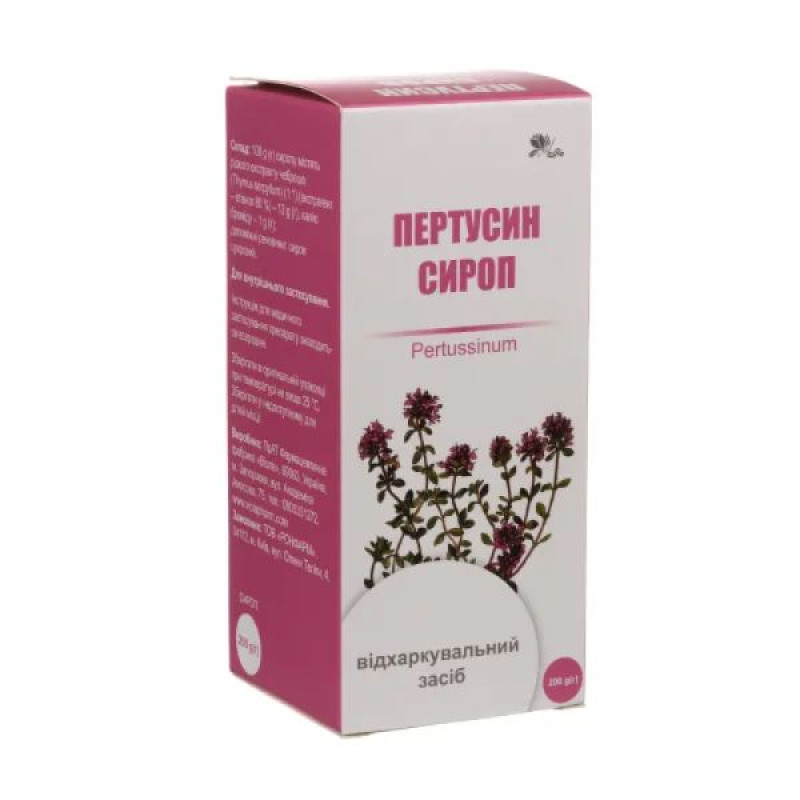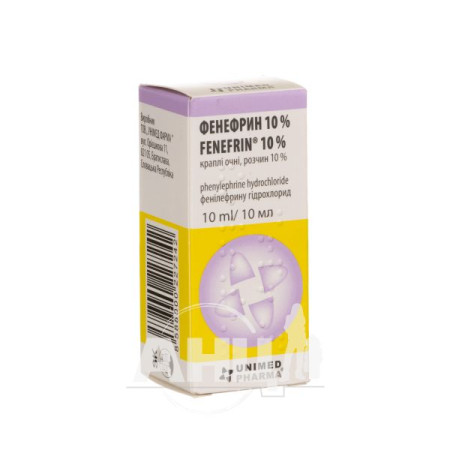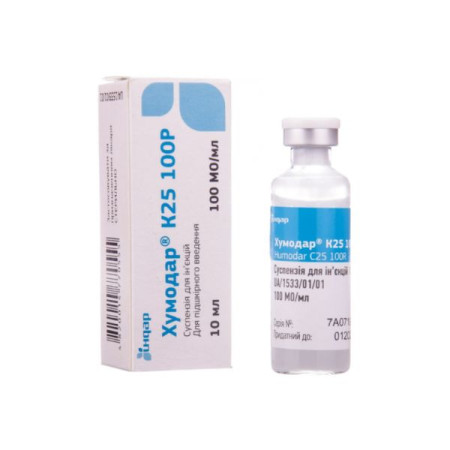Pertusyn syrup 200 ml

Instructions for Pertussin syrup 200 ml
Composition
active ingredients: 100 g of syrup contain liquid extract of thyme (Thymus serpyllum) (1:1) (extractant – ethanol 80%) – 12 g, potassium bromide – 1 g;
1 ml of syrup contains liquid extract of thyme (Thymus serpyllum) (1:1) (extractant – ethanol 80%) – 0.16 g, potassium bromide – 0.01 g;
excipient: sugar syrup.
The drug contains 8-11% ethanol; the absolute alcohol content is: in 1 teaspoon (5 ml) - up to 0.43 g, in 1 dessert spoon (10 ml) - up to 0.87 g, in 1 tablespoon (15 ml) - up to 1.3 g.
The sucrose content in 1 teaspoon (5 ml) of the preparation corresponds to approximately 0.32 bread units, in 1 dessert spoon (10 ml) - approximately 0.64 bread units, in one tablespoon - approximately 0.96 bread units.
Dosage form
Syrup.
Main physicochemical properties: brown liquid with a pleasant odor.
Pharmacotherapeutic group
Respiratory system. Cough and cold preparations. Expectorants, combinations. ATX code R05C A10.
Pharmacological properties
Pharmacodynamics.
Pertussin belongs to the group of secretomotor agents. It stimulates the physiological activity of the ciliated epithelium and peristaltic movements of the bronchioles, promoting the movement of sputum from the lower to the upper respiratory tract and its excretion. The drug softens cough and has a calming effect.
Indication
Cough in bronchitis, tracheitis, pneumonia, whooping cough, inflammatory diseases of the upper respiratory tract.
Contraindication
Hypersensitivity to the components of the drug, including bromides or other plants of the Lamiaceae family, as well as sensitivity to celery and birch pollen (cross-reaction is possible); decompensation of the cardiovascular system, arterial hypotension, severe atherosclerosis, anemia, kidney disease, diabetes mellitus, alcoholism.
Special safety precautions
Before taking the drug, patients with impaired glucose tolerance must consult a doctor.
When using the drug, the recommended doses should be followed.
Interaction with other medicinal products and other types of interactions
Barbiturates are incompatible with potassium bromide or require caution (their effect is enhanced).
If you are taking any other medications at the same time, you should inform your doctor!
Application features
If symptoms worsen during treatment with the drug and/or shortness of breath, fever, purulent sputum appear, you should consult a doctor.
If symptoms persist for one week, you should consult a doctor. When using the drug, you should adhere to the recommended doses.
This medicinal product contains 8-11% by volume of ethanol (alcohol), i.e. 1.3 g/dose (15 ml), equivalent to 26 ml of beer, 11 ml of wine per dose. Harmful for patients with alcoholism.
Use during pregnancy or breastfeeding
Due to the lack of sufficient data, it is not recommended to use the drug during these periods.
Ability to influence reaction speed when driving vehicles or other mechanisms
Since the drug contains alcohol, patients should exercise caution when driving or operating other machinery.
Method of administration and doses
The drug is to be used orally. Children aged 4 to 6 years – 2.5-5 ml of the drug (½-1 teaspoon), previously dissolved in 20 ml (2 dessert spoons) of cooled boiled water 3 times a day.
Children aged 6 to 12 years – 10-15 ml (1 dessert spoon or 1 tablespoon) 3 times a day.
Adults – 15 ml (1 tablespoon) 3 times a day.
The duration of treatment is determined by the doctor individually.
Children.
Use in children over 4 years of age as prescribed by a doctor.
Overdose
In case of overdose, side effects and allergic reactions may be intensified. Treatment is symptomatic.
Adverse reactions
With prolonged use, bromism may occur: skin rash, rhinitis, conjunctivitis, gastroenterocolitis, general weakness, ataxia, bradycardia. Treatment of bromism consists in stopping the drug and increasing the excretion of bromine salts (administration of large amounts of sodium chloride, fluids, diuretics.
Allergic reactions to the components of the drug are possible. Gastrointestinal disorders (including nausea, vomiting, diarrhea) are possible.
In case of any adverse reactions, you should consult a doctor!
Expiration date
4 years.
The shelf life after opening the bottle is 3 months.
Storage conditions
Store in original packaging at a temperature not exceeding 25 ° C. Keep out of the reach of children.
The drug cannot be used after the expiration date indicated on the package!
Packaging
100 g in a bottle; 1 bottle in a cardboard pack; 100 g in bottles; 200 g in bottles with or without a nozzle; 1 bottle in a cardboard pack; 200 g in bottles with or without a nozzle.
Vacation category
Without a prescription.
Producer
Location of the manufacturer and its business address.
69063, Ukraine, Zaporizhia, Akademika Amosova St., 75.
Applicant: PrJSC Pharmaceutical Factory "Viola".
Location of the applicant.
69063, Ukraine, Zaporizhia, Akademika Amosova St., 75.
There are no reviews for this product.
There are no reviews for this product, be the first to leave your review.
No questions about this product, be the first and ask your question.













